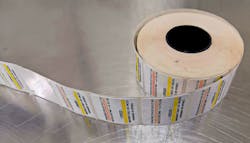Sterilization indicators need their true colors shining through
Earlier this year, the U.S. Food and Drug Administration (FDA) reported a risk of healthcare professionals who reprocess medical devices to misinterpret the chemical indicator tags used to validate the effectiveness of hydrogen peroxide gas plasma sterilization of medical devices.
Essentially, two manufacturers market FDA-cleared chemical indicator products for use. The challenge? Simply put, either product uses a different color to showcase the results.
Within hospitals and other healthcare facilities, the question among Sterile Processing & Distribution (SPD) departments is what they can do about it? [Editor’s Note: For a discussion of potential solutions, read this month's Periscope.]
Healthcare Purchasing News posed this question to more than a dozen sterile processing subject matter experts who participated in its annual Endoscope Care coverage. Respondents were asked to choose between four potential solutions or suggest their own solutions and explain. None involve FDA regulations mandating the use of a single, standardized universally accepted color scheme.
The four choices:
- Increase education and training of SPD professionals to follow their sterilization equipment’s instructions-for-use – regardless of different methods or types of equipment used.
- Demand that color standards for sterilization indicators be established, adopted and implemented – regardless of manufacturer or brand – to facilitate the process.
- Switch to a different type of sterilization process.
- Outsource the sterilization process to a third-party company.
Half of the executives leaned toward education indicated in No. 1.
“Education and training are key here,” insisted Melissa Kubach, Clinical Education and Training Manager, Mobile Instrument Service & Repair “Different indicator brands have conflicting colors for identifying processed versus unprocessed. Until the industry requires a standard exposure color, the only viable option is to reinforce training with posted visual examples within Sterile Processing and the Operating Room.”
“There will always be product and process variations from facility to facility,” Frieze told HPN. “SPD professionals need adequate and frequent training and support to properly use all the tools associated with their responsibilities at the facility where they work. Management and educators can employ varied training methods and work aids to help assure that everyone is able to perform their duties, and that quality is consistent from employee to employee and shift to shift.”
Frieze also recommends a workflow tracking system as a valuable work support tool.
“Processing steps and quality checks are documented, so technicians do not have to rely on memory,” she said. “For endoscope processing, these detailed instructions reduce the risk of missing steps in the lengthy and complex process. For quality checks like chemical indicators, the proper end point color for a passing result can be checked against a guide on the tracking system display. The CaseTrak360 system provides 360-degree end-to-end process tracking, including an Endoscopy Module. The software supports tracking, tracing and best practices and helps eliminate errors as the software guides and monitors the process.”
“A standardization of indicators would be ideal, but these things take time, and the need for understanding is immediate,” indicated Natalie Reece, Endoscopy Clinical Educator, Key Surgical. “SPD professionals should receive regular training on their equipment and indicators because each facility is different, and there is high turnover.”
“Ideally, we should have consistent indicators, she noted. “This is not only for sterile processing technicians, but for the end users. If that cannot be accomplished, training, competencies, and visuals need to be adopted to ensure sterile processing technicians and end users are able to correctly interpret the indicator.”
“I recently experienced [an] issue at a hospital where we manage and staff the SPD,” Agoston recalled. “The problem was that the integrator changed color but the change was slight on some loads. The OR noticed this and questioned if the device was properly sterilized. A sterilization integrator reading should be a pass/fail choice with little to no room for interpretation.”
Only one favored No. 4 in outsourcing sterilization.
No one recommended No. 3, which involved moving away from hydrogen peroxide sterilization altogether.
“In an area of healthcare with increasing demands and equipment variance, standardizing on indicators would appear to be a way to reduce confusion in the marketplace,” urged Christian Escobar, Ambu’s Director of Marketing – Visualization.
But Rob Cripe, Chief Commercial Officer, Integrated Endoscopy, recommends something a bit more fundamental.
“This eliminates guesswork, misinterpretation, mistakes and reduces the burden on staff and ultimately is safer for patient and healthcare professionals,” Cripe continued. “When single-use is not an option, outsourcing may be the best alternative as this is a dedicated service that can/should deliver results that are potentially more reliable and reduces the burden on internal resources.”
- Outlook Endoscopy: What’s next for endoscope reprocessing and device design?
- Looking ahead at endoscope reprocessing quality performance
- Techniques and tips for aeration, drying and storage
- Why ergonomics should not be over- looked
- Advance SPD to include higher-paid specialist teams
- The true colors of hydrogen peroxide sterilization chemical indicator strips
- Periscope: Color-coded standard needed for hydrogen peroxide sterilization indicator strips
- Endoscope Care in 2020 and beyond
About the Author
Rick Dana Barlow
Senior Editor
Rick Dana Barlow is Senior Editor for Healthcare Purchasing News, an Endeavor Business Media publication. He can be reached at [email protected].







